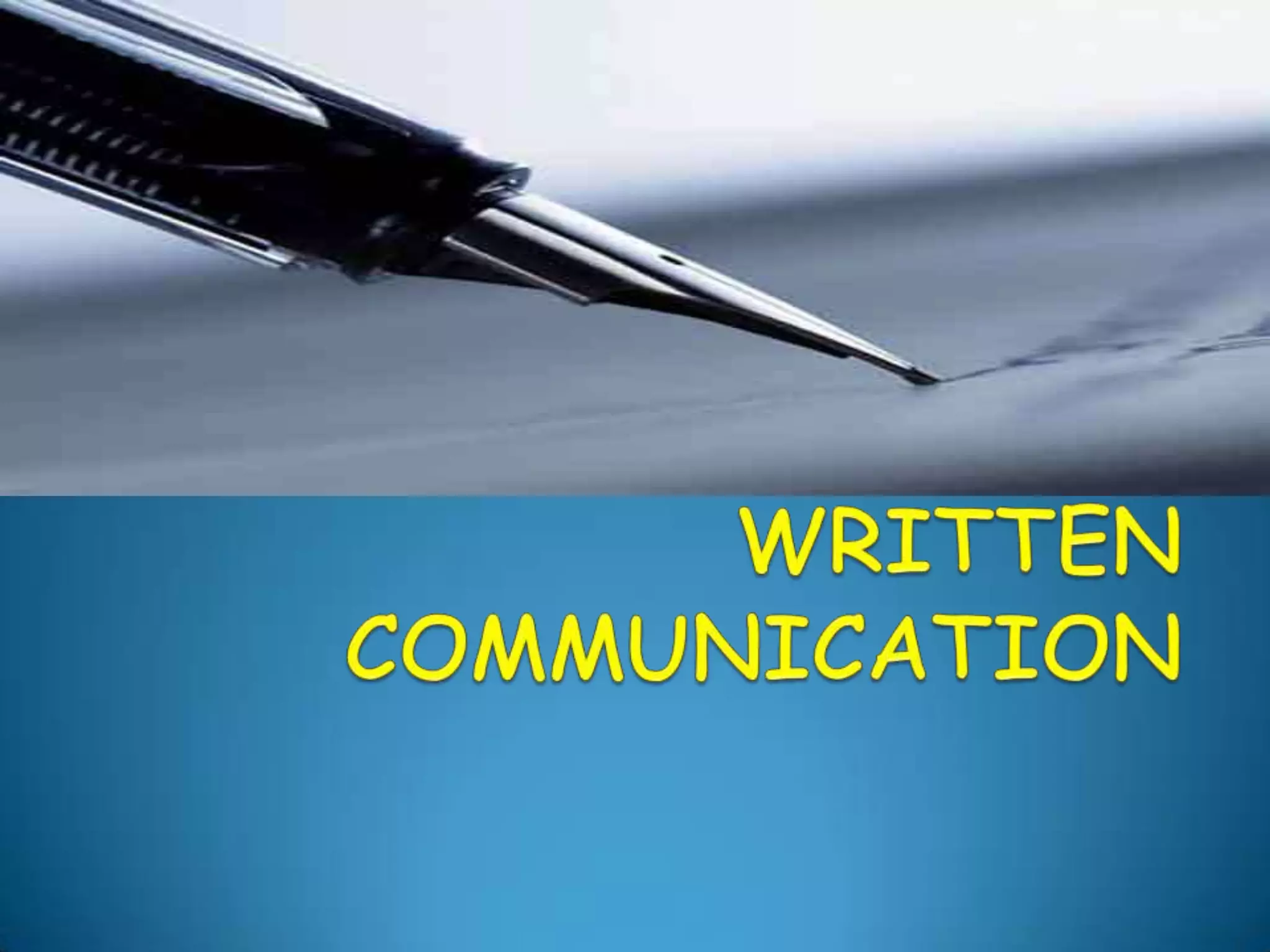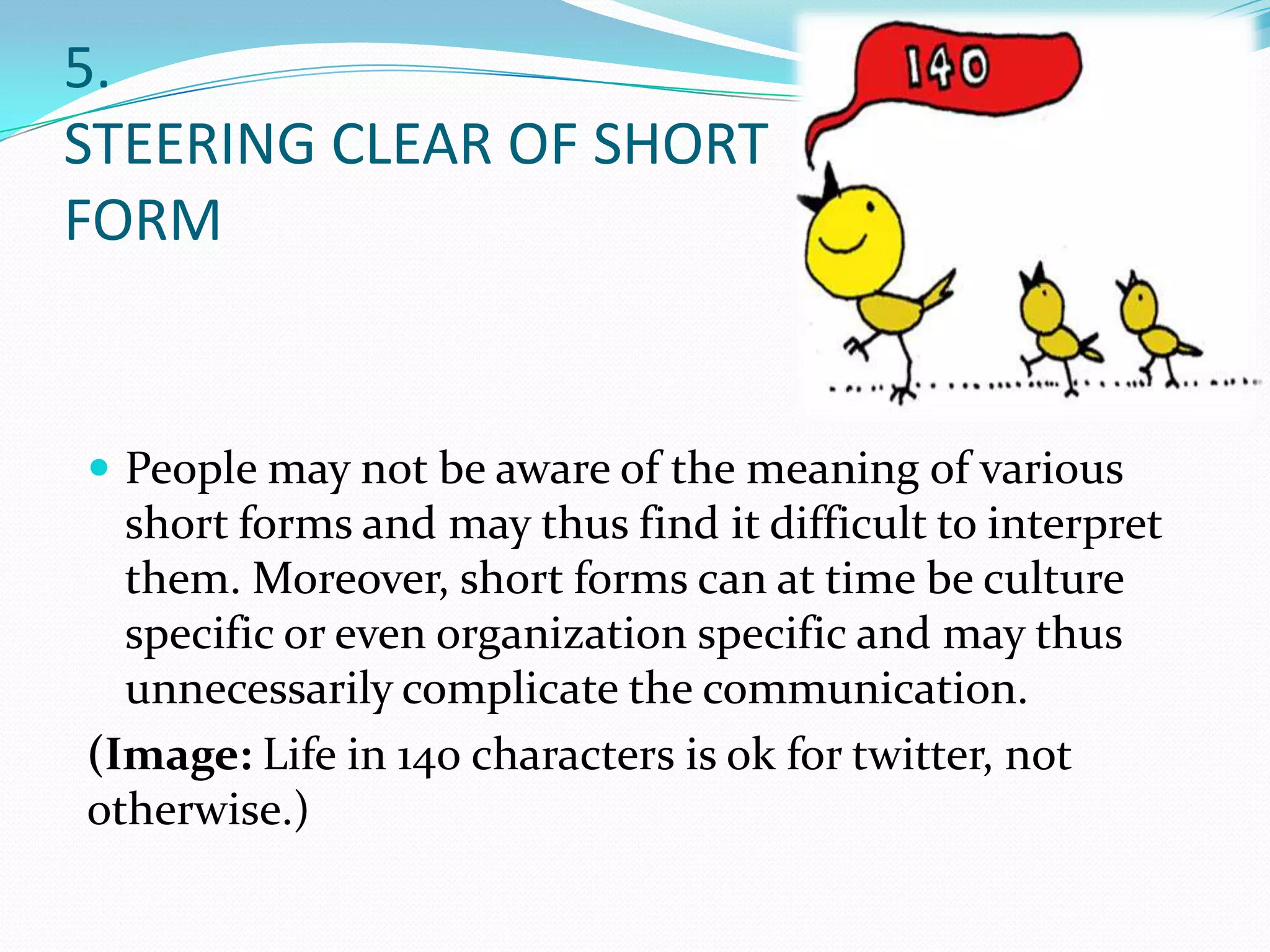The document discusses the history and development of written communication. It begins by explaining how writing evolved from economic necessities in ancient civilizations, where clay tokens were used and eventually developed into written documents like cuneiform. The document then outlines three stages in the progression of written communication: 1) pictograms, 2) writing on materials like paper and parchment with common alphabets, and 3) electronic communication using controlled waves and signals. It also discusses advantages like creating permanent records, and disadvantages such as being time-consuming. Common etiquettes for effective written communication are presented, including focusing on format, structuring content, ensuring connectivity, and being sensitive to the audience.





































